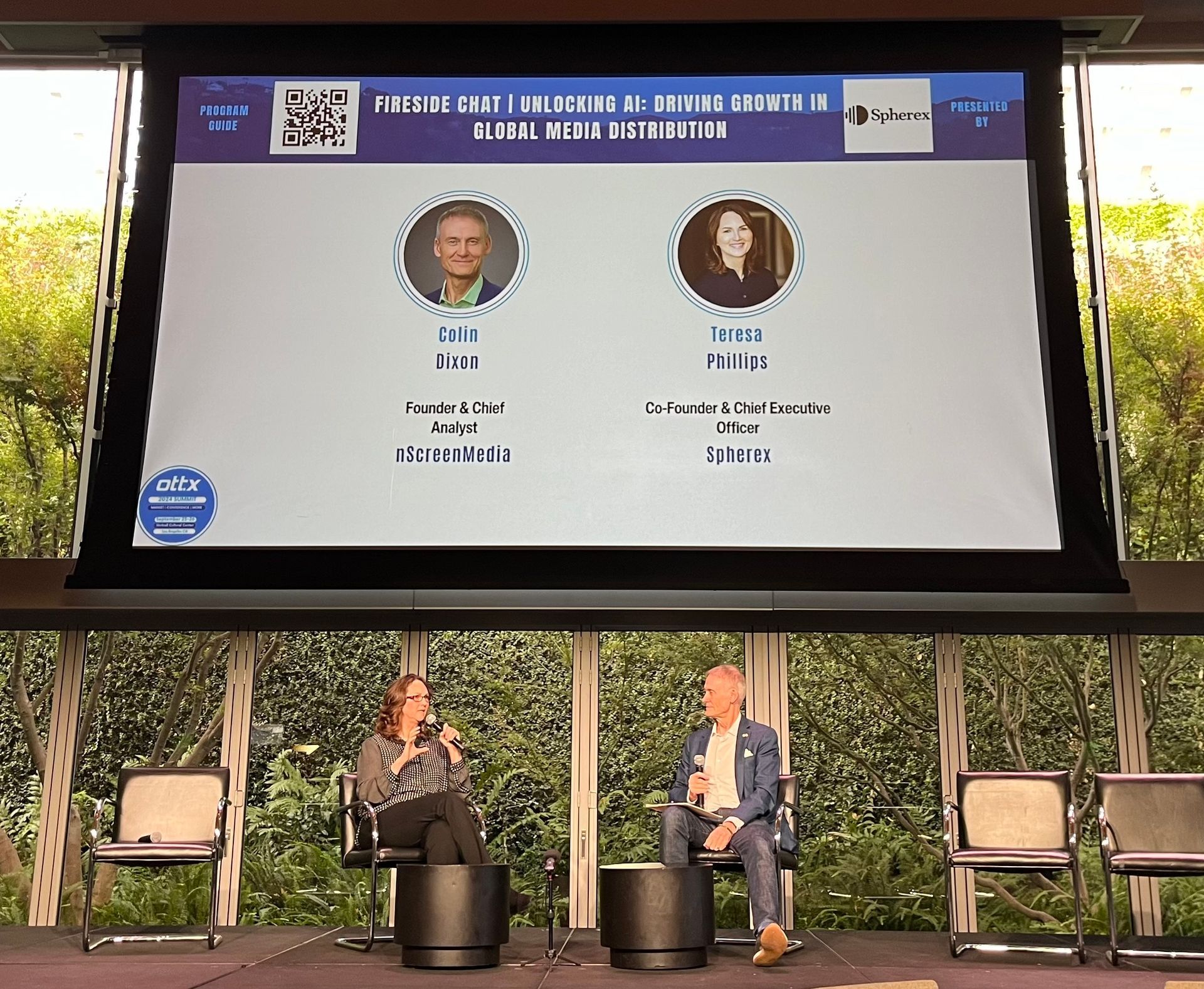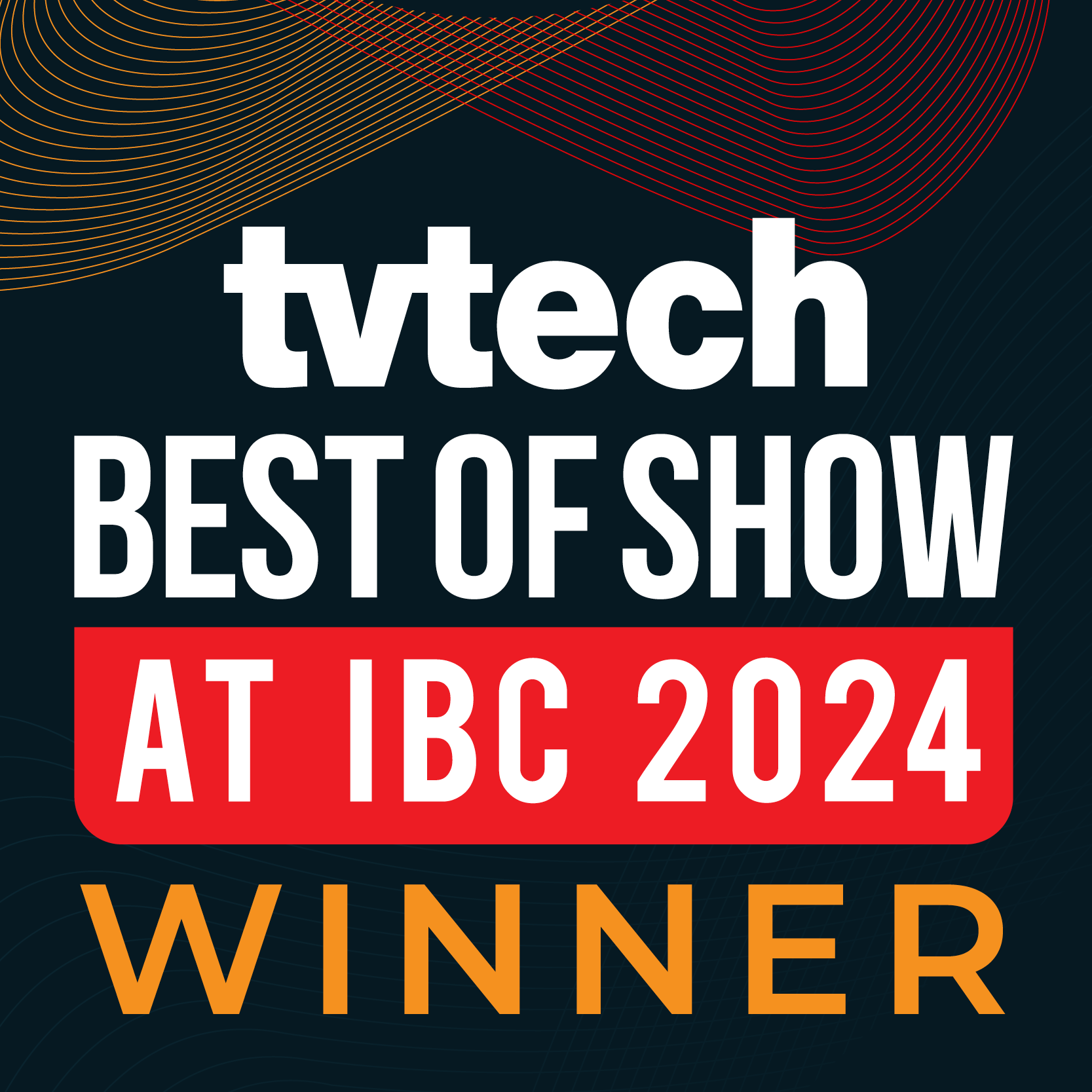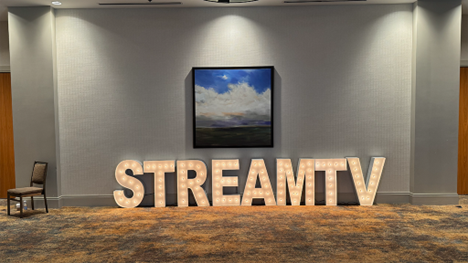The Pot of Gold at the End of the Pandemic

The Pot of Gold at the End of the Pandemic
2020, a year of global chaos and crisis, cannot come to an end soon enough for many. But 2021 is just around the corner, and there is good reason to believe (much) better days are ahead. The media industry responded with creativity to dramatic changes in video consumption (daily online content viewing doubled) and production (radically transformed during lockdown), and put more muscle into efforts to achieve greater diversity. Industry leaders weigh in on lessons learned, and emerging smarter and stronger in the new year.
“This year can only be described as surreal. One bright spot for me was the clear reminder of the power our industry holds to bring happiness to an entire nation. Ratings at Food Network, HGTV and TLC broke records as fans came to us to learn new cooking skills, how to furnish a home office, or just enjoy a fun escape together as a family. The Discovery Lifestyle Networks took the mission to keep people entertained very seriously. The programmers and talent really stepped up to keep fresh episodes coming and made over 400 hours of new content during quarantine, much of it shot by the talent themselves. Not only was it exciting to see what we could achieve under unimaginable circumstances, but we also learned a lot about what audiences value – authenticity, real storytelling, relatable situations – all things that we will carry forward even when this pandemic is behind us.” – Kathleen Finch, Chief Lifestyle Brands Officer, Discovery, Inc.
“If there is a silver lining from the past year, it’s that we as unscripted producers were pushed to shake up our models and adapt quickly to drastic changes in the market. Many producers took advantage of unscripted television’s nimble production model to release innovative and entertaining new projects despite the immense challenges of producing during a pandemic. With the rise of streamers and the increased focus on scripted television, we’ve all had conversations about the potentially grim future of this genre. But as the last year has proven, there is more demand for content than ever before. And increasingly, high quality compelling programming continues to break through regardless of genre.” – Patrick Reardon, President, Jupiter Entertainment
“It’s the most exciting time for creativity in advertising since the dawn of radio.” – David Cohen, IAB
“In 2020, we all played defense together. In 2021, we’ll go back on offense. Streaming and free ad-supported TV (aka FAST) are exploding, which means amazing content for consumers and equally amazing opportunities for advertisers. Disruptive, direct-to-consumer brands are about to drive a renaissance of creativity while reinventing the shopping experience. It’s the most exciting time for creativity in advertising since the dawn of radio. We’ve all been forced to slow down and focus on what’s important. That’s an enormous gift. We also now know just how badly we miss physically interacting with our friends and colleagues. We’ve learned lessons that will make us better executives and better human beings. It was a tough way to learn, but we should treasure those lessons.” – David Cohen, CEO, IAB
“2020 will without question go down in the record books for many reasons too numerous to cover here. That said, the challenges of the last year have also provided us with opportunities to focus on change. This year’s COVID pandemic, the Black Lives Matter movement, and focus on the truly important issues in this election year made us all sit back, assess and ensure that we are actively making decisions and participating in ways that drive positive change for a better tomorrow. In the new year, Fuse will pursue even more new opportunities to provide story-driven programming and content that entertains, inspires and empowers our young, underserved Latino and multicultural audiences ? which represent the fastest growing segment of America’s population ? and to collaborate with creative, brand and distribution partners who share our goal.” – Miguel “Mike” Roggero, CEO, Fuse Media
“If I’ve learned anything in 2020, I learned that human beings are truly are capable of adapting, pivoting, and even innovating under circumstances that previously would have been unthinkable. When production ground to a halt due to the pandemic, Michelle Vicary and her programming team suddenly found themselves with a lot of time on their hands and that turned out to be a gift. With an unexpected surplus of development time on the front end of our original movie productions, they were able to more deeply flesh out and fine-tune each story and character arc. As soon as they were given the greenlight to resume production, they hit the ground running. In the end, they succeeded in delivering 39 of the 40 movies originally planned (with one acquisition, making the total 40 across both networks), and they did so without compromising production quality one iota. In fact, I’ve heard over and over that this year’s holiday slate is our strongest yet. Over the past few weeks, we’ve received an outpouring of appreciation and gratitude from our viewers, who are telling us how much comfort they have found in Countdown to Christmas and Miracles of Christmas … that our holiday movies are an antidote to the uncertainty and isolation and angst inflicted by Covid. The gratitude goes both ways. We are deeply grateful and honored to be able to come through for our audience and bring them levity, light, positivity, and feel-good warmth at the end of this very tough year.” – Wonya Lucas, President & CEO, Crown Media Family Networks
“Although arts and performance venues have been closed during the pandemic, PBS, our producers, and our flagship arts series, Great Performances have continued to bring audiences a broad range of content specials during this time. Providing arts programming is an important part of our service mission, and our upcoming schedules include arts and performance content that connects audiences to experiences not currently possible. In the midst of and post COVID-19, we will continue to work with partners to keep that steady drumbeat of arts programming in our schedule in fresh, varied and reimagined ways.” – Sylvia Bugg, Chief Programming Executive and General Manager, General Audience Programming, PBS
“In many ways we now have more tools and options than we had before.” – David Brady, Cream Productions
“What amazed me is the resilience of this industry. As certain aspects of it were challenged, people moved laterally and found workarounds and efficiencies elsewhere. In many ways we now have more tools and options than we had before. Covid basically amplified everything digital, and made us really appreciate that face-to-face relationships are still essential – and understand those which can stay distanced.” – David Brady, CEO, Cream Productions
”As 2020 comes to a close, we at A+E Networks, have taken this time to reflect on the many blessings we have. We appreciate all of our partners and their continued support through these most challenging times. This year more than ever we have leaned in deeply to our incredible linear brands, A&E, The History Channel and Lifetime. We realize more than ever how important it is to entertain and inform our viewers. We are particularly proud of the way we were able to aid those in need through A+E Corporate Social Responsibility. On behalf of all of my colleagues, our deepest thanks to each and every one of you, and wishing everyone a safe and healthy holiday season.” – Peter Olsen, President of Ad Sales, A+E Networks
“Connected TV will continue to grow in importance and time spent. More and more brands will invest in this channel, which will ultimately influence CTV platforms to build out new capabilities for advertising, and improve existing ad solutions. We will also see more ways to integrate commerce across this channel. The race for the #1 spot in the online grocery category will heat up. We’ll see the top dogs go to great lengths to beat out their competitors, and will invest heavily in data solutions that enable them to learn more about their audiences. Personalization will be at the forefront of every media conversation at these companies, and a key component of all campaigns in 2021 and beyond.” – Oz Etzioni, CEO, Clinch
“Heading into 2021, the trends of multi-channel convergence will only continue to accelerate. While bunkered at home in 2020, consumers formed new habits for consuming content and commerce that were already underway prior to the pandemic. In the coming year, we’ll see the next phase of technology convergence and artificial intelligence – to deliver on the promise of omnichannel advertising and empower marketers to market the way consumers consume in the new normal.” – Lance Neuhauser, President, Mediaocean
“All of a sudden it’s the ‘Wild West’ again, and we’re all finding ways to do more with less.” – Adam Reed, ThinkFactory Media
“In many ways, the pandemic and challenges this year have reignited a creative energy across the industry that reminds me of the early days of unscripted. All of a sudden it’s the ‘Wild West’ again, and we’re all finding ways to do more with less and innovate in order to overcome the extraordinary obstacles we’re facing. We’re thinking differently, stretching creatively, and ultimately, I believe we’ll come out of this with stronger content and more efficient processes for executing.” – Adam Reed, CEO, Thinkfactory Media
“If there’s one takeaway from 2020, it’s that free OTT and streaming media services exploded as consumers were forced into lockdown and this will only continue to grow as we head into 2021. Ad-supported streaming media will become the default standard for how audiences consume content. Because of this, there will be an increased demand for data-driven targeting and measurement solutions. With increased fragmentation across devices, publishers, and platforms, identity resolution will become even more critical.” – Andre Swanston, CEO, TruOptik a TransUnion company
“My current expectation is for demand to be strong in 2021. With traditional advertisers continuing to augment the market and newer, direct to consumer brands reactivating their marketing initiatives, we end the year on a high note. In 4Q 2020, more advertisers incorporated DRTV into their campaign mix, and this trend will likely continue into next year. In addition, newer darlings like FEP will provide more significant revenue growth opportunities. Furthermore, advertisers want the ability to test, measure, and attribute results and optimize campaigns now more than ever. This will lead to greater partnership with marketers and an ever more indispensable relationship between media companies and agencies.” – Rahsan-Rahsan Lindsey, EVP of Advertising Sales & Marketing, TV One
“We’ll emerge from this past year knowing our communication skills have enhanced and grown stronger despite the remote environment.” – Ronald Day, NBCUniversal Telemundo Enterprises
“The global pandemic has drastically impacted our lives on a personal level and also how we operate as a media network. I believe when we come out on the other side, we’ll recognize that the adjustments we’ve had to make during these challenging times will bear fruit in the end. We are extremely proud that we were able to schedule and produce this year’s Billboard Latin Music Awards to honor our Latin music and performers under the ‘new normal.’ This was the first show to air live during the pandemic for which we instituted strict safety protocols in line with CDC and local government to ensure a safe show for the production team, crew and performers. We’ll also emerge from this past year knowing our communication skills have enhanced and grown stronger despite the remote environment. Over the past months I’m proud to see such a deep connection across teams at Telemundo and every day I’m inspired and impressed by our teams’ dedication and ongoing commitment. We’ve continued our productions and are gearing up for a spectacular 2021.” – Ronald Day, President, Entertainment and Content Strategy, NBCUniversal Telemundo Enterprises
“With COVID-19 rates increasing around the U.S., isolated audiences, spectators and fans will begin to demand more innovative, engaging broadcast experiences as they clamor for any semblance of social togetherness. The initial efforts to bring sports back online this past summer was a herculean effort. However, viewership was generally down over 40% year-over-year. Producers will need to create more engaging content while balancing the cost constraints as the industry recovers from the economic impact. Expect to see continued emphasis on remote production, increased internet protocol (IP) connectivity and advanced RF spectrum usage as viewers will continue to demand immersive experiences on all of their devices. Increased use of wireless cameras, as well as new remote techniques for close-in shots, goal-line cameras, touchdown close-ups, and point-of-view shots will get viewers to the heart of the action while limiting risk of COVID-19 infections. Video production teams will become even more innovative with the use of wireless cameras and their go-anywhere capability – allowing event directors to get amazing mobile shots without risk.” – Mickey Miller, CEO, Vislink
“During the pandemic, people have had a perfect storm of far more free time, with far fewer ways to spend it. The result: a surge in the amount of time people spend on entertainment, as well as in new habits that drive more prolific consumption: spending more time at home instead of commuting, renting premium movies instead of going to a theater, or downloading games instead of buying a disc. When the pandemic passes, these habits will become permanent for many and create a greater demand for content from now on.” – Jon Giegengack, Founder and Principal, Hub Entertainment Research
“As fast as the drama-led streamers develop, so too is new factual on-demand coming into the market.” – Nicky Davies Williams, DCD Rights
“It has been a year when streamers streaked to the forefront. The increasingly competitive field saw the majors launch alongside the big three, as well as the rapid expansion of a strong group of more specialist SVODs, which have provided fertile territory for diverse new programming as they increasingly extend their launches internationally, aided by the ease of transmission. New and original drama with named talent have been at a premium and we have benefitted from launching both The Secrets She Keeps with Laura Carmichael and My Life is Murder starring Lucy Lawless, both pre-sold to US streamers and multiple partners around the world. As fast as the drama-led streamers develop, so too is new factual on-demand coming into the market, with Discovery a key player and others such as CuriosityStream becoming more involved in originals and co-productions. Global lockdowns have certainly favored the on-demand model for broadcasters and streamers alike, which bodes well for content owners.” – Nicky Davies Williams, CEO, DCD Rights
“I feel the pandemic has given us an opportunity to reassess and refocus on what’s genuinely important in our lives and communities. I hope it’s taught us some humility and provided valuable lessons on who and what are truly essential. As for television, I’d love to think this new perspective will inspire us all to create a product that is increasingly unifying, positive and inclusive – something that reflects the best of us.” – Scott Feeley, President, High Noon Entertainment
“The rise in home-bound consumers seeking more entertainment options during the pandemic has resulted in a three to five-year acceleration of where ad-supported OTT was already headed. As local relevance continues to be a top priority, advertisers will invest more in localized OTT campaigns to deliver targeted and contextually relevant messaging to reach their intended customers. Looking ahead, with the availability of better data for audience targeting by location, behaviors and interests, as well as closed-loop attribution capabilities, OTT is proving to be the cost-effective way to extend reach and minimize waste in ad spending that will continue drive greater advertiser demand.” – Tom Cox, President, Premion
“2020 saw a challenging advertising market and surfaced the need for new, more robust advertising capabilities. Collaboration will be key to unlocking new advertising revenues and we believe that in 2021 we will see the first examples of localised advertisers, broadcasters and service providers starting to work together to prove the value of the addressable model.” – Nick Thexton, Chief Technology Officer, Synamedia
“We are all blessed to work in this industry and it’s been inspiring to see how we’ve come together as a community.” – Jeff Collins, Fox News Media
“While 2020 has been an incredibly tough year, it’s also been a transformative one. We are all blessed to work in this industry and it’s been inspiring to see how we’ve come together as a community to persevere, innovate and grow all the while giving back. As we embark on 2021, I am optimistic we will all return to work more appreciative and thankful for the amazing colleagues, clients and jobs we have.” – Jeff Collins, Executive Vice President, Advertising Sales, FOX News Media
“Creativity thrives from restrictions that force us out of our comfort zones and into uncharted territory. If this ‘obstacle-to-invention’ ratio is proportional, then 2020 should give birth to some truly mind-blowing new concepts that expand the reality genre in brave new directions.” – Jim Casey, CEO, Painless Productions
“For aspiring Tier 1 streaming providers who spent 2020 jockeying for position behind Netflix, Amazon Prime and Disney+, the new year will be about strengthening partnerships and platforms. Breaking away from the pack will involve business alliances that can help them improve discovery, consumer adoption and mass-market awareness, as well as technology upgrades to scalable, flexible architectures with strong recommendation and monetization capabilities.” – Paul Pastor, Chief Business Officer, Firstlight Media
“The combination of winter weather and COVID lockdowns may push broadband usage past even the peaks of what we saw in the early days of the pandemic. A conservative estimate of average monthly usage for 2021 would be 430-445 GB per subscriber, representing anticipated year-over-year growth of approximately 10%. It’s beginning to look likely that we may in fact face a ‘worst case’ scenario in which average monthly usage going into next year could exceed 480 GB or even 500 GB.” – Mark Trudeau, CEO, OpenVault
“Our industry has the potential to re-energize the world in the most positive ways.” – Dick Lippin, The Lippin Group
“As vitally important as it is to overcome the serious pandemic and economic issues, we must also put mental health at the top of the list as well. For our industry to prosper in the future, which I believe it can, we must begin to develop a more positive attitude to prospects for our entertainment and media businesses in 2021. In countless conference calls, I have heard repeatedly ‘We have learned what we can live without.’ What we need to do is change that type of message to ‘We see an exciting future, one which will confirm our role as one of the most important industries by virtue of our ability to entertain, inform, and serve as a sanctuary even during the worst of times.’ Our industry has the potential to re-energize the world in the most positive ways. I truly hope it rises to the occasion.” – Dick Lippin, Chairman and CEO, The Lippin Group
“The pandemic has reinforced the need for a massive pipeline of content around the world, especially with contracted domestic revenues from theatre closures. But that content is not one size fits all in local markets. We need to invest in AI and machine learning to culturally customize content, so we can deliver personalized experiences at scale.” – Teresa Phillips, CEO, Spherex
“The global pandemic was very good for connected TV. As consumers were forced to stay home, the biggest screen in the house took on more significance. Per Nielsen, Netflix took home 34% of total streaming time in Q2 2020, outpacing Hulu, Amazon Prime Video, and YouTube. Meanwhile Roku reported a 73% YOY increase in revenue for Q3 2020. Where consumers go, advertisers follow. More budgets will be directed to CTV as the space matures but at the same measurement and scale headaches are sure to follow.” – Andy Monfried, CEO, Lotame
“When planning for 2021, marketers are going to have to leave room to pivot on a dime.” – Kerel Cooper, LiveIntent
“ The fact of the matter is that we are living and working under a new normal and still discovering the scale of change. There is a lot that is still up in the air for 2021 that we can’t plan for. We are beholden to a lot of external factors that will dictate when we go back to in-person events and when certain industries, such as travel, are able to make a full comeback. When planning for 2021, marketers are going to have to leave room to pivot on a dime, as the market dictates. 2020 taught us all that we must plan for the unexpected.” Kerel Cooper, SVP, Global Marketing, LiveIntent
“COVID-19 has been an accelerant to technology trends in both the mobility and ad tech sectors. As brands look to increase their advertising spend in the post-pandemic world, they will find that customer journeys have permanently changed and they will need to look to new innovative platforms to reach their core audiences.” – Cherian Thomas, CEO, Octopus Interactive
“As CTV/OTT viewership continues to increase in 2021, accelerated by the pandemic, there is a real opportunity for marketers to engage with this growing incremental audience and drive their business outcomes. Media dollars will continue to follow the eyeballs and move into CTV/OTT where advertisers can now measure the website visits, in-store visits and actual conversions generated from their video campaigns. And, with demand for CTV/OTT inventory only increasing, advertisers should invest early to secure the highly coveted streaming ad inventory. There is opportunity in change. The question is: who is going to move quickly enough to take advantage of it in 2021?”. – Dennis Cook, VP of Marketing, Gamut
“The pandemic accelerated digital transformation across industries – media and cable were no exception. This year’s SCTE•ISBE Cable?Tec Expo® kicked off with a remarkable first?of?its?kind 8K holographic light field, but offering this sort of multi-gig symmetrical service at scale will require higher bandwidth and lower latency than current networks allow. In 2021, cable’s continued investments in DOCSIS and 10G technology will help make light fields and other immersive media a viable alternative for future generations.” – Mark Dzuban, President and CEO, SCTE•ISBE
“I’m more excited and energized about the industry post-pandemic than I have been at almost any time in my career.” – Tony Tackaberry, Lion Television USA
“I’m more excited and energized about the industry post-pandemic than I have been at almost any time in my career. There will be challenges aplenty and the whole landscape will be different – from how we produce to how networks buy to what people want to watch. These changes are in part a direct consequence of the pandemic. But, the pandemic has also ushered in a much-broader, much- anticipated shift in the industry that will permanently alter how business gets done. The good news is that, as always, with big change comes great opportunity. And the need for great, standout content will only grow.” – Tony Tackaberry, CEO, Lion Television USA
“The pot of gold at the end of 2020 is…really just a way of describing the value of Discovery’s new streaming service, d+, available on January 4 to all those who wish to have the largest collection of their favorite real life entertainment and the talent they truly love, all in one place, at a price it would be a true crime not to have!” – Henry Schleiff, Group President of Investigation Discovery, Travel Channel, American Heroes Channel and Destination America
“More than ever, viewers want to watch content that uplifts them. At UPtv, and our streaming service UP Faith & Family, uplifting movies and series have been part of our DNA since inception, and we’re going to keep making this highly sought-after content.” – Charley Humbard, Founder and CEO, Up Entertainment
Share this post
Related Posts











